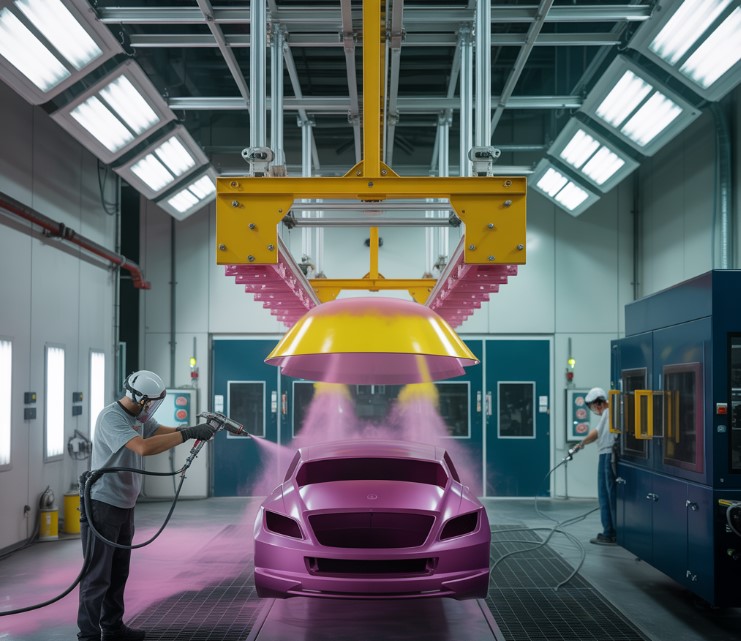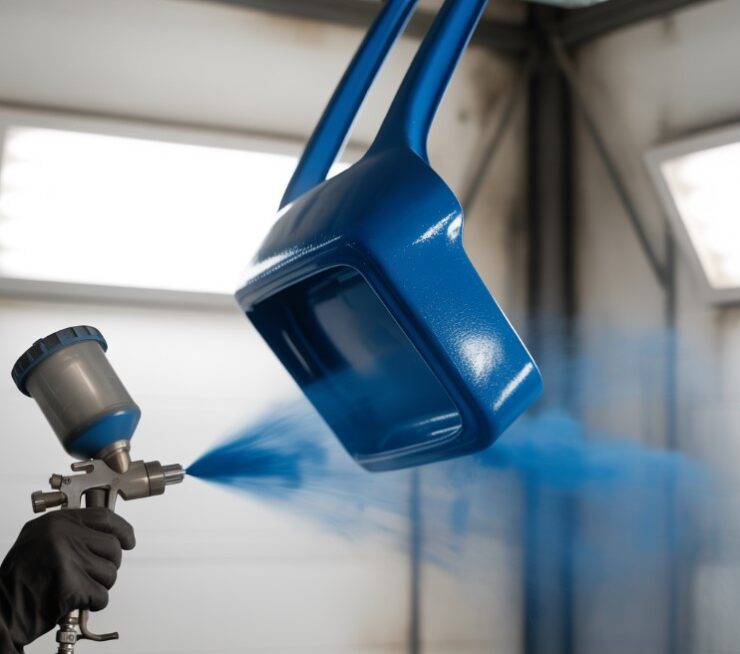Powder coating has become one of the most popular finishing techniques in modern manufacturing, offering a durable, attractive, and eco-friendly alternative to traditional liquid paints. Whether used on car parts, household appliances, or architectural metalwork, powder coating delivers both form and function in impressive measure. This guide explores the process, benefits, and applications of powder coating, providing a full understanding of why it has become the preferred choice for professionals across various industries.
What Is Powder Coating?

Powder coating is a dry finishing process that uses a fine powder made from a mixture of resins, pigments, and curing agents. Unlike liquid paint, it does not rely on a solvent to keep the binder and filler parts in liquid suspension. Instead, the powder is electrostatically charged and sprayed onto a grounded surface. Once applied, the coated item is heated in an oven, where the powder melts, flows, and cures into a hard, protective finish.
The result is a smooth and even coating that is highly resistant to chipping, scratching, fading, and corrosion. The absence of solvents also means the process emits virtually no volatile organic compounds (VOCs), making it an environmentally responsible choice.
The Powder Coating Process
The powder coating process involves several key steps to ensure a flawless and durable finish.
Surface Preparation
Preparation is crucial for successful powder coating. Any contaminants, such as oil, dirt, or rust, must be removed from the substrate. Common cleaning methods include chemical stripping, sandblasting, and phosphating. A clean surface allows the powder to adhere properly, preventing imperfections in the finish.
Application
Once prepared, the part is ready for coating. The powder is applied using an electrostatic spray gun, which gives the powder particles a positive charge. The metal piece being coated is grounded, so the charged powder adheres to it evenly. This electrostatic attraction ensures uniform coverage, even on complex shapes.
Curing
After application, the coated item is placed in a curing oven at temperatures ranging between 160°C and 210°C (320°F to 410°F). The heat causes the powder to melt and form a continuous film that chemically reacts to create a strong, cross-linked coating. Once cured, the finish is tough, flexible, and resistant to wear.
Advantages of Powder Coating

Powder coating offers a wide range of advantages over conventional liquid painting methods, making it the coating of choice for both industrial and decorative purposes.
Durability
Powder-coated surfaces are significantly tougher than those treated with traditional paint. The thick, uniform layer provides excellent resistance to impacts, scratches, and corrosion. This durability makes it ideal for outdoor furniture, automotive parts, and industrial machinery.
Environmental Benefits
One of the most appealing aspects of powder coating is its minimal environmental impact. Because it contains no solvents, it releases negligible VOCs into the atmosphere. Overspray can also be collected and reused, resulting in minimal waste. This efficiency and eco-friendliness have made powder coating a cornerstone of sustainable manufacturing.
Cost-Effectiveness
Although the initial setup for powder coating may be more expensive than traditional painting, the long-term savings are substantial. The high transfer efficiency, reduced waste, and shorter curing times translate into lower operational costs. The reduced need for maintenance or repainting further enhances its cost-effectiveness.
Aesthetic Variety
Powder coating offers a vast range of colours, textures, and finishes. From smooth gloss and matte options to special effects like metallic or hammered appearances, the versatility of powder coatings allows designers to achieve virtually any look. This makes it particularly popular in the automotive, furniture, and architectural sectors.
Common Applications
Powder coating is used across numerous industries thanks to its combination of durability, versatility, and eco-friendliness.
- Automotive: Used for wheels, rims, chassis components, and engine parts to withstand high temperatures and harsh conditions.
- Architecture: Applied to railings, gates, window frames, and curtain wall systems for long-lasting colour and weather resistance.
- Appliances: Commonly seen on refrigerators, washing machines, and dryers for a sleek and durable exterior.
- Furniture: Outdoor and office furniture often features powder-coated finishes for durability and aesthetic appeal.
Innovations in Powder Coating Technology

Recent advancements have expanded the capabilities of powder coating even further. Low-temperature curing powders allow heat-sensitive materials such as plastics and composites to be coated. Improved application technologies ensure even coverage on complex shapes and thin substrates. Additionally, new formulations offer antimicrobial properties, UV resistance, and enhanced corrosion protection, catering to specialised industries.
Choosing a Professional Powder Coating Service
Selecting the right provider is key to achieving a high-quality finish. Factors to consider include the company’s experience, equipment, and range of available coatings. A reliable provider will also offer guidance on material preparation, colour matching, and aftercare.
For an in-depth overview of the process, benefits, and considerations involved, explore The Complete Guide to Powder Coating, which provides expert insights and practical tips for both professionals and enthusiasts.
Conclusion
Powder coating has revolutionised the finishing industry with its combination of durability, efficiency, and environmental responsibility. It provides a superior, long-lasting finish that can enhance the appearance and performance of countless products. As technology continues to evolve, powder coating will remain at the forefront of sustainable and innovative surface finishing solutions.

